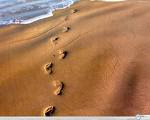The deformity usually exists in one toe at the proximal interphalangeal joint or the base of the toe. It points upward and the end of the toe points down-and looks just like a hammer.
The symptoms are usually first noticed when a corn develops on top of the toe and becomes painful, usually when wearing tight shoes. Initially a hammer toe is usually flexible, bu
t when longstanding it becomes more rigid.
Hammertoes can be due to a number of things. Several factors are known to increase the risk of developing hammer toes: Some people are just structurally prone to develop hammertoes. (2) tight footwear is an important factor in the cause of hammer toes as well as providing the pressure that causes the symptoms.
A number of approaches can be undertaken to manage a hammer toe: It is important to have the shoes that are worn checked to make sure they are wide enough. You want enough space in the toe box to allow room for the toes without any excessive pressure. If a corn is present, this will need to be treated. If the toe is still flexible, it may be possible to use splints to try and correct the toe. Padding is often used to get pressure off the toe to help the symptoms. If
conservative treatment is unsuccessful at helping the symptoms, surgery is often a good option.
Surgery to correct for a hammertoe may be performed as a same day procedure. There are several different types of procedures that can be used depending on the foot structure and if the hammertoe is flexible or rigid.
On our website www.vailfoot.com we have numerous products that can help with hammertoes.
A budin splint is constructed of comfortable, but sturdy material that extend the hammertoe, allowing it to lie straight. It will help prevent the toe from becoming worse.
So if you have a hammertoe that is beginning to give you problems, give Dr. T. F. Vail's office a call at 419-423-1888 to set up an appointment.




